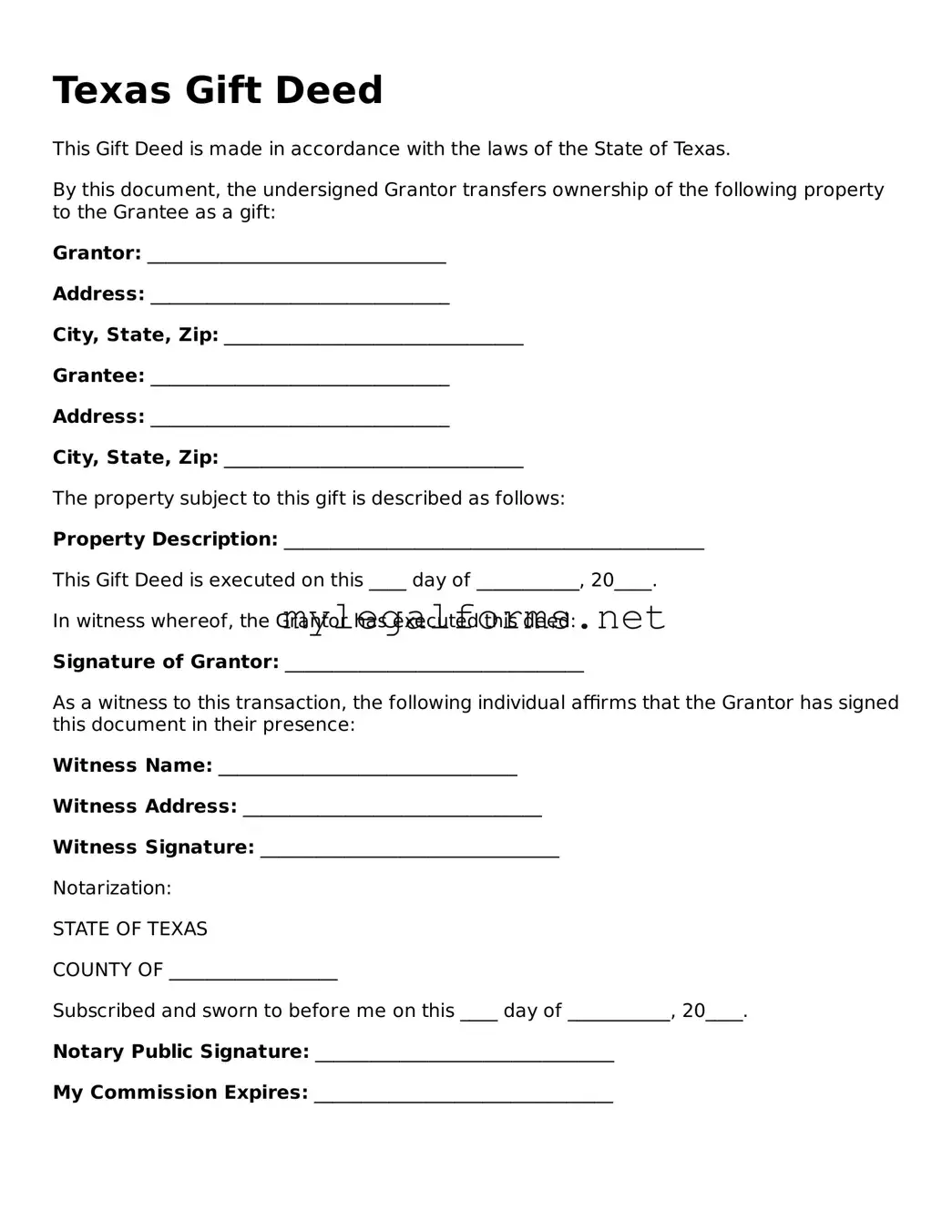Texas Gift Deed
This Gift Deed is made in accordance with the laws of the State of Texas.
By this document, the undersigned Grantor transfers ownership of the following property to the Grantee as a gift:
Grantor: ________________________________
Address: ________________________________
City, State, Zip: ________________________________
Grantee: ________________________________
Address: ________________________________
City, State, Zip: ________________________________
The property subject to this gift is described as follows:
Property Description: _____________________________________________
This Gift Deed is executed on this ____ day of ___________, 20____.
In witness whereof, the Grantor has executed this deed:
Signature of Grantor: ________________________________
As a witness to this transaction, the following individual affirms that the Grantor has signed this document in their presence:
Witness Name: ________________________________
Witness Address: ________________________________
Witness Signature: ________________________________
Notarization:
STATE OF TEXAS
COUNTY OF __________________
Subscribed and sworn to before me on this ____ day of ___________, 20____.
Notary Public Signature: ________________________________
My Commission Expires: ________________________________
